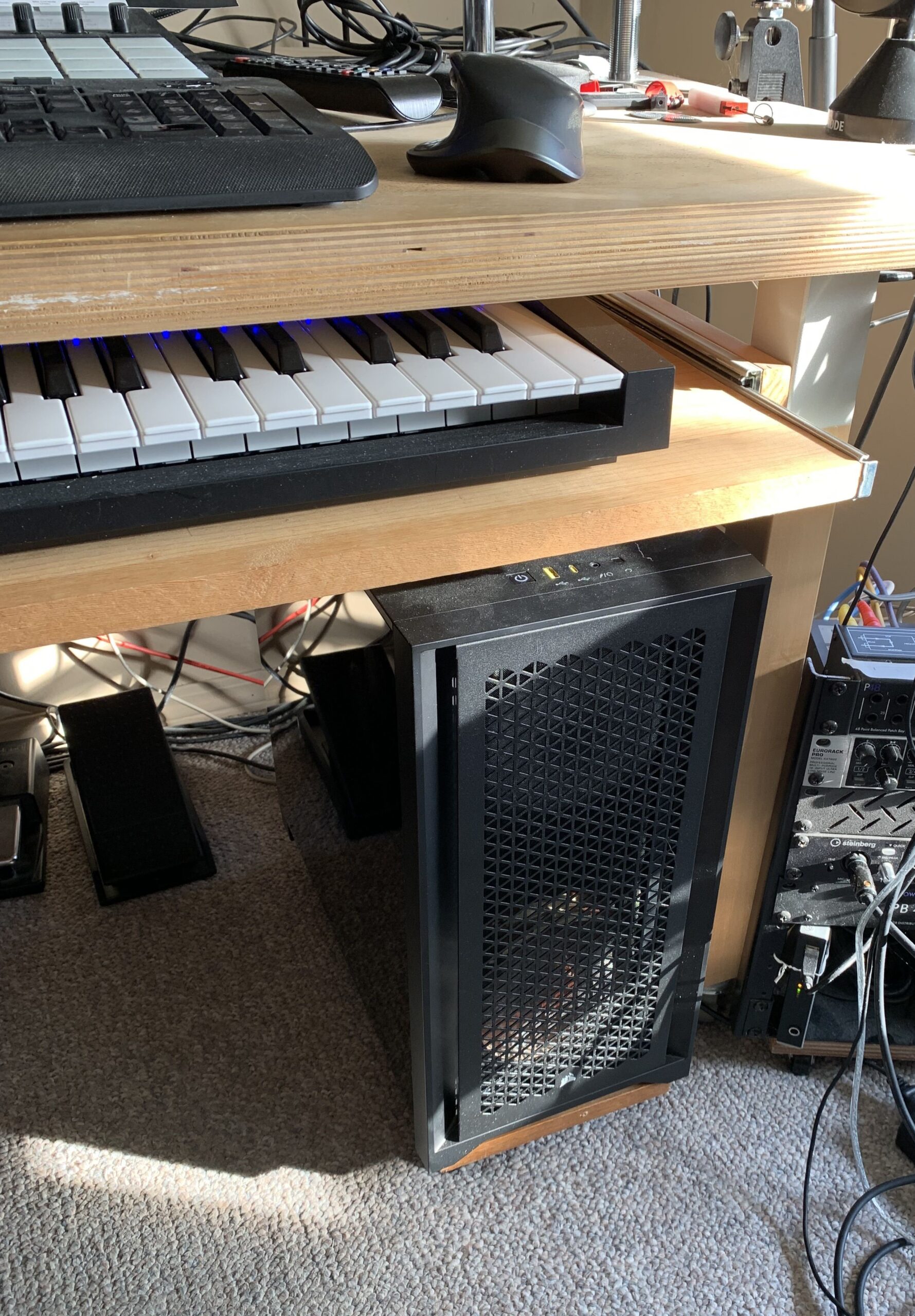I'm just documenting this, in case it's of interest to anyone here, who might have similar priorities to mine. It's not by any means the best system - but it's not exactly entry level either. (Why not a Mac? That's in the p.s. section at the bottom.)
I wanted to get to a reasonably high performance system for a middle of the road price, that doesn't take too much fiddling with low level settings (like CPU affinity) and hopefully also avoid software makers saying "it's not supported".

The resulting, more specific goals for this build became:
- Avoid asymmetrical CPU architectures, since most software doesn't really deal with those intelligently yet.
- that eliminated the newer Intel i5, i7 and i9 and some of the high end Ryzens with 3D cache
- Get to pretty fast single core speed, since I see myself migrating to ever more modelled instruments and fx
- that eliminates a lot of workstation CPUs (which also tend to become more expensive builds all around)
- that led me to the second from the top Ryzen - also because it was quite a price jump to the top end
- Get to a decent core count
- that got me to a Ryzen 9 series
- Have generous number of m2 slots (so I can keep using my older NVMe SSDs)
- that led me to X670 based motherboards
- Have decent upgrade potential
- that also led me to the new Ryzen AM5 socket based systems rather than the prior (less expensive) generation, since this would facilitate a potential CPU upgrade sometime later, while keeping the rest of the system intact
- Try to get to low latency as best as possible
- According to AMD, the sweet spot for the new Ryzen CPU's is 6000MHz RAM, so I got that with CL32 latency, which was the lowest I could easily get.
- Also to get to higher RAM clock speeds, one has to stick with just 2 RAM slots for now, so 2x32GB sticks was the best currently feasible configuration. Since I don't run large orchestral projects, 64GB should serve me well for quite a while.
- Have a reasonably silent system
Ended up with:
- CPU: Ryzen 7900x: 12 cores, 24 threads 4.7/5.5 GHz
- Motherboard: ASUS Prime X670E-PRO WIFI with 4 m2 slots
- RAM: Trident Z5 64GB DDR5 6000MHz CL32 Dual Channel Kit (2x 32GB)
- Storage: 3 NVMe SSDs, and 2 traditional hard disks: one 18TB drive for internal backups, and another 2 TB drive for keeping installation programs and other "spare" stuff, that's rarely used.
- Case: Ended up going with a high air-flow case this time around. The idea is to keep fan speeds very low because of the superior air flow rather than having a really boxed in and sound proofed ("silent") case where the fans have to do more work to move air past the hot items. -- This strategy may or may not work out, but would be relatively easy to overcome later.
- Video: For now I'm just using the integrated video from the CPU, since that's plenty for DAW use. So a separate video card may or may not end up in that system - I'm just not sure yet.
I haven't done any overclocking other than the kind of stuff that comes as easy configuration within the BIOS, like using the faster RAM at it's full rated speed. Maybe a bit more overclocking later, maybe never.
p.s. I'm using the Apple ecosystem (MacOS, iOS) for my daily personal computing and had considered going MacOS for my music computer as well, but ended up deciding against that for the time being, because:
- My music computer continues to address my desire for fiddling and tweaking to a degree, while still having access to a very wide and well supported ecosystem (Linux is still a much more tricky platform for music making)
- In music I still enjoy the use of older hardware and software, and that's simply easier with Windows
- On a very subjective personal level, I very much enjoy being multi-platform, using MacOS, Windows and Linux for different parts of my computing life. Not being stuck in one world has been a meaningful part of my self-definition pretty much all of my adult life. But I wouldn't recommend it for most individuals, since it's difficult enough to become good at using one eco-system. -- There's also the (old man shaking fists at clouds) bonus: I get to complain about the shortcomings of every computing platform!

p.p.s. I'm using Linux for my server needs and some IoT fiddling, so I get my Linux kicks that way.

 www.emxr.com
www.emxr.com






